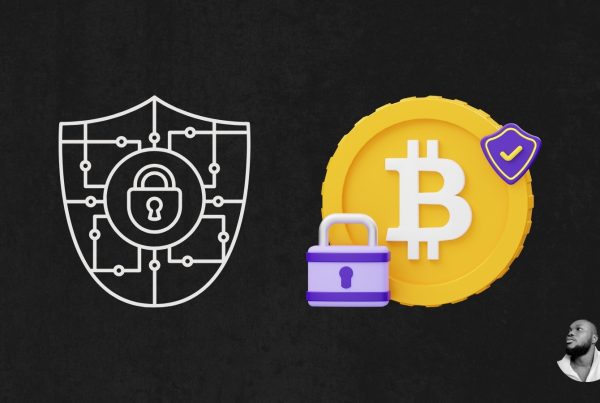How to Manage Risk in a Volatile Crypto Market
The cryptocurrency market is known for its extreme volatility, which can present both opportunities and challenges for investors. Understanding how to manage risk effectively is crucial for anyone looking to navigate this dynamic landscape. This comprehensive guide will delve into various strategies and tools that can help you mitigate risks while maximizing potential returns in the crypto market.
Understanding Cryptocurrency Volatility
Volatility in the cryptocurrency market refers to the rapid and significant price fluctuations that can occur within short periods. Factors contributing to this volatility include:
- Market Sentiment: News, social media trends, and public perception can dramatically influence prices.
- Regulatory Changes: New regulations or government actions can lead to sudden market shifts.
- Technological Developments: Innovations or issues within blockchain technology can impact investor confidence.
- Liquidity: The relatively low liquidity of some cryptocurrencies can lead to larger price swings.
Understanding these factors is essential for developing effective risk management strategies.
Key Strategies for Managing Risk
Diversification
Diversification is a fundamental principle in risk management. By spreading investments across various cryptocurrencies and asset classes, you can reduce the impact of a poor-performing asset on your overall portfolio. Consider the following:
- Invest in Different Cryptocurrencies: Allocate funds to a mix of established coins like Bitcoin and Ethereum, as well as promising altcoins.
- Include Other Asset Classes: Consider incorporating traditional assets like stocks or bonds to balance your portfolio.
Setting Stop-Loss Orders
Stop-loss orders are a powerful tool for limiting potential losses. By setting a predetermined price at which your asset will be sold, you can protect your investment from significant downturns. Here’s how to implement stop-loss orders effectively:
- Determine Your Risk Tolerance: Decide how much loss you are willing to accept before selling.
- Set Realistic Stop-Loss Levels: Avoid setting stop-loss orders too close to the current price to prevent being stopped out by normal market fluctuations.
Utilizing Dollar-Cost Averaging (DCA)
Dollar-cost averaging is an investment strategy that involves regularly purchasing a fixed dollar amount of a cryptocurrency, regardless of its price. This approach can help mitigate the effects of volatility by averaging out the purchase price over time. Benefits of DCA include:

- Reduced Emotional Decision-Making: DCA encourages disciplined investing, reducing the likelihood of panic selling.
- Lower Average Cost: By buying at various price points, you can potentially lower your overall investment cost.
Staying Informed
Keeping up with the latest news and trends in the cryptocurrency market is vital for effective risk management. Here are some ways to stay informed:
- Follow Reputable News Sources: Websites like CoinDesk and The Block provide timely updates and analysis.
- Join Online Communities: Engage with other investors on platforms like Reddit or Twitter to share insights and strategies.
Advanced Risk Management Techniques
Using Options and Futures
For more experienced investors, options and futures contracts can be effective tools for managing risk. These financial instruments allow you to hedge against potential losses or speculate on price movements without directly owning the underlying asset. Key points to consider include:
- Hedging: Use options to protect your portfolio from adverse price movements.
- Speculation: Engage in futures trading to profit from anticipated price changes.
Implementing Risk-Reward Ratios
Establishing a risk-reward ratio helps you evaluate the potential return of an investment relative to its risk. A common approach is to aim for a ratio of at least 1:2, meaning you expect to gain $2 for every $1 you risk. To implement this:
- Analyze Potential Trades: Before entering a trade, assess the potential upside versus the downside.
- Adjust Your Strategy: If the risk-reward ratio is unfavorable, consider adjusting your entry or exit points.
Case Studies: Successful Risk Management in Crypto
Examining real-world examples can provide valuable insights into effective risk management strategies. Here are a couple of notable cases:
The Rise and Fall of BitConnect
BitConnect was a cryptocurrency investment platform that promised high returns through a lending program. However, it was revealed to be a Ponzi scheme, leading to significant losses for investors. Those who managed their risk by diversifying their investments or avoiding the platform altogether were able to protect their capital.
Bitcoin’s 2017 Bull Run
During the 2017 bull run, Bitcoin’s price skyrocketed, attracting many new investors. However, those who employed strategies like setting stop-loss orders and taking profits at predetermined levels were able to secure gains while minimizing losses during subsequent corrections.
Common Mistakes to Avoid
Even seasoned investors can fall prey to common pitfalls in the crypto market. Here are some mistakes to watch out for:
- Overtrading: Frequent buying and selling can lead to increased fees and emotional decision-making.
- Ignoring Security: Failing to secure your assets can result in theft or loss. Use hardware wallets and two-factor authentication.
- Chasing Losses: Trying to recover losses by making impulsive trades can lead to further losses.
Frequently Asked Questions (FAQs)
What is the best way to start investing in cryptocurrency?
Begin by researching different cryptocurrencies, understanding their use cases, and choosing a reputable exchange to buy and store your assets securely.
How can I protect my investments from market volatility?
Implement strategies such as diversification, setting stop-loss orders, and staying informed about market trends to manage risk effectively.
Is it safe to invest in cryptocurrencies?
While investing in cryptocurrencies carries inherent risks, employing sound risk management strategies can help mitigate these risks and protect your investments.
What role does market sentiment play in cryptocurrency prices?
Market sentiment can significantly influence cryptocurrency prices, as positive or negative news can lead to rapid price changes based on investor reactions.
Conclusion
Managing risk in a volatile crypto market requires a combination of strategies, discipline, and continuous learning. By diversifying your portfolio, setting stop-loss orders, and staying informed, you can navigate the complexities of cryptocurrency investing more effectively. Remember to avoid common pitfalls and consider advanced techniques as you gain experience. For the latest news and insights in the crypto space, visit Bitrabo.
Disclaimer: This article is for informational purposes only and should not be considered financial advice. Always conduct your own research and consult with a financial advisor before making investment decisions.
The Crypto Watchlist of the Week 🔎
Subscribe to receive expert-curated projects with real potential—plus trends, risks, and insights that matter. Get handpicked crypto projects, deep analysis & market updates delivered to you.


